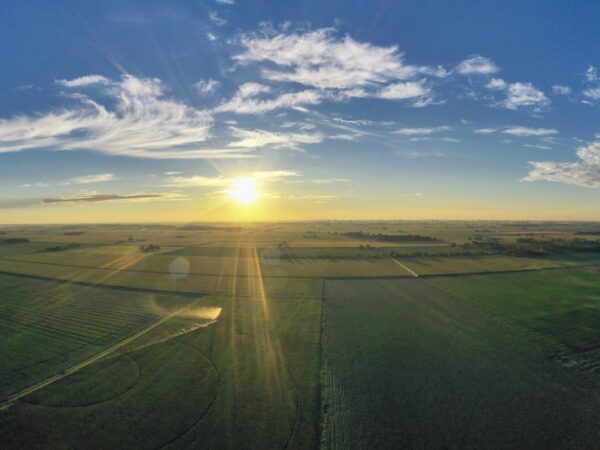
By Rachel Fritts, Eos

This story originally appeared in Eos and is republished here as part of Covering Climate Now, a global journalism collaboration strengthening coverage of the climate story.
Everything wears away in time, but human activities like farming can dramatically accelerate natural erosion rates. The arrival of European colonists in North America, for instance, sped up the rate of erosion and river sediment accumulation on the continent by a factor of 10, according to a new study.
An international team of researchers from China, Belgium, and the United States analyzed 40,000 years of accumulated river sediment from sites across North America to determine the natural background rate of erosion on the continent. They compared this rate to that of the past 200 years, a time when both agriculture and population rapidly increased following European colonization. During the past century alone, humans moved as much material as would be moved by natural processes in 700–3,000 years, the team reported in November in Nature Communications.
“By having this huge compilation [of data] that stretches back many thousands of years, we’re able to contextualize the human impact against that natural geologic variability,” said lead author David Kemp, a geologist with the China University of Geosciences in Wuhan. “It was a surprise to me that the jump was there and that it seemed to be so neatly coincident with European arrival.”
A Widespread Trend
To reach their findings, the team compiled data on sediment accumulated in riverbeds from 126 sites across the United States and Canada. In 94% of the sites surveyed, sediment accumulation rates over the past 200 years were faster than the expected geological rate. Even more dramatic, nearly 40% had a rate of sediment accumulation at least 10 times that of the background rate. This trend was not confined to a certain location or region, according to the researchers.
“What I found particularly interesting in the results is that if you look at human impact on the sedimentation rate, you see it continent-wide,” said study coauthor Veerle Vanacker, a geomorphologist with Université Catholique de Louvain in Louvain-la-Neuve, Belgium. “I think that’s quite important, because it shows that this is something which has been generalized over the entire area.”
The researchers cite intensive farming as the likely culprit in the increased sediment accumulation rate, with forestry, ranching, and river management also playing roles. Sediment accumulation rates shot up around the turn of the 19th century, a time period that coincides with a sharp increase in both the European population in North America and the amount of land dedicated to agriculture. Prior to that time, humans did not have a noticeable impact on erosion rates in North America.
Accounting for the Sadler Effect
To compare the background rate of accumulation over 40,000 years with accumulation rates over more recent timescales, the team had to account for a known complication called the Sadler effect, named after study coauthor Peter Sadler of the University of California, Riverside. According to the Sadler effect, the farther back in time you go, the slower the erosion rate appears to be, even if the rate is the same in reality. That’s because more fine scale changes can be smoothed away over time, and certain layers can be lost altogether.
“With this effect in mind, you can see how a recent increase in sediment accumulation compared to the past 40,000 years may simply be the result of this time bias,” said Gary Stinchcomb, a soil geomorphologist at Murray State University in Murray, Ky., who was not involved in the study. “I think the most exciting find of this study is that they addressed the time span dependence problem and still found [that] humans affected sediment accumulation” going back 200 years.
Informing Restoration Efforts
According to the researchers, their findings can help inform modern soil and water conservation efforts by providing a benchmark for natural erosion rates. “There are large and costly river valley restoration projects under way all over North America,” Stinchcomb said. “One could argue that the work presented in [this study] shows us that we will need to peer back before 200 years ago if we want to restore these streams to a more ‘natural’ condition.”
The most recent data in the study also help to provide a glimpse at whether ongoing restoration efforts have worked. “There have been huge investments in soil and water conservation techniques, and one of the questions is always the effectiveness of these techniques,” Vanacker said. “I think that the results show these programs can probably be very effective, because you see that during the last decades, there already seems to be a reduction of the sedimentation rates.”
Catch more stories on erosion on Great Lakes Now:
As Great Lakes pummel Michigan, beach towns rush to set development rules
Review Underway: Will IJC’s efforts be enough for flooded shoreline municipalities?
High water wreaks havoc on Great Lakes, swamping communities
API key not valid. Please pass a valid API key.Featured image: Ohio farm (Great Lakes Now Episode 1016)




